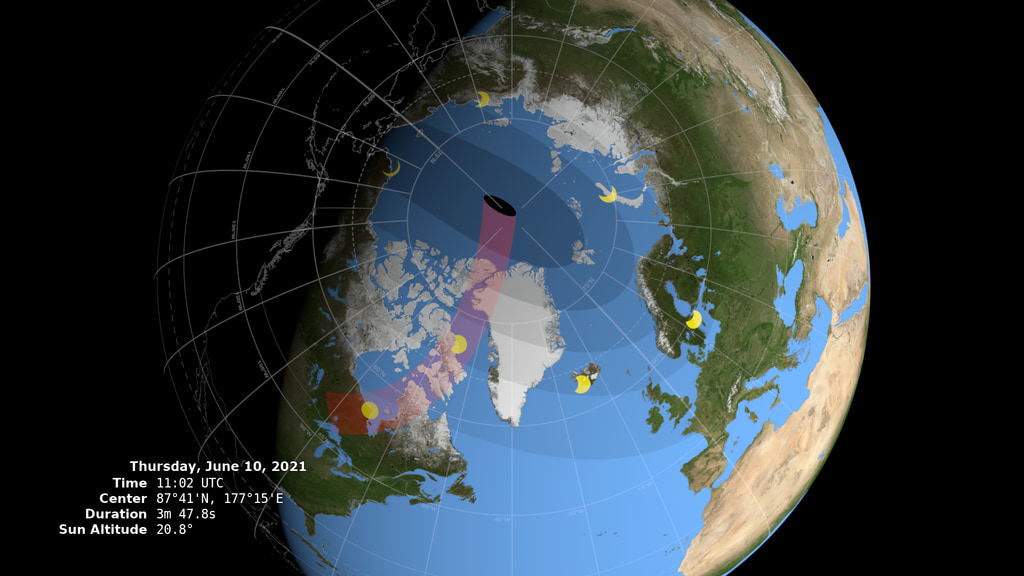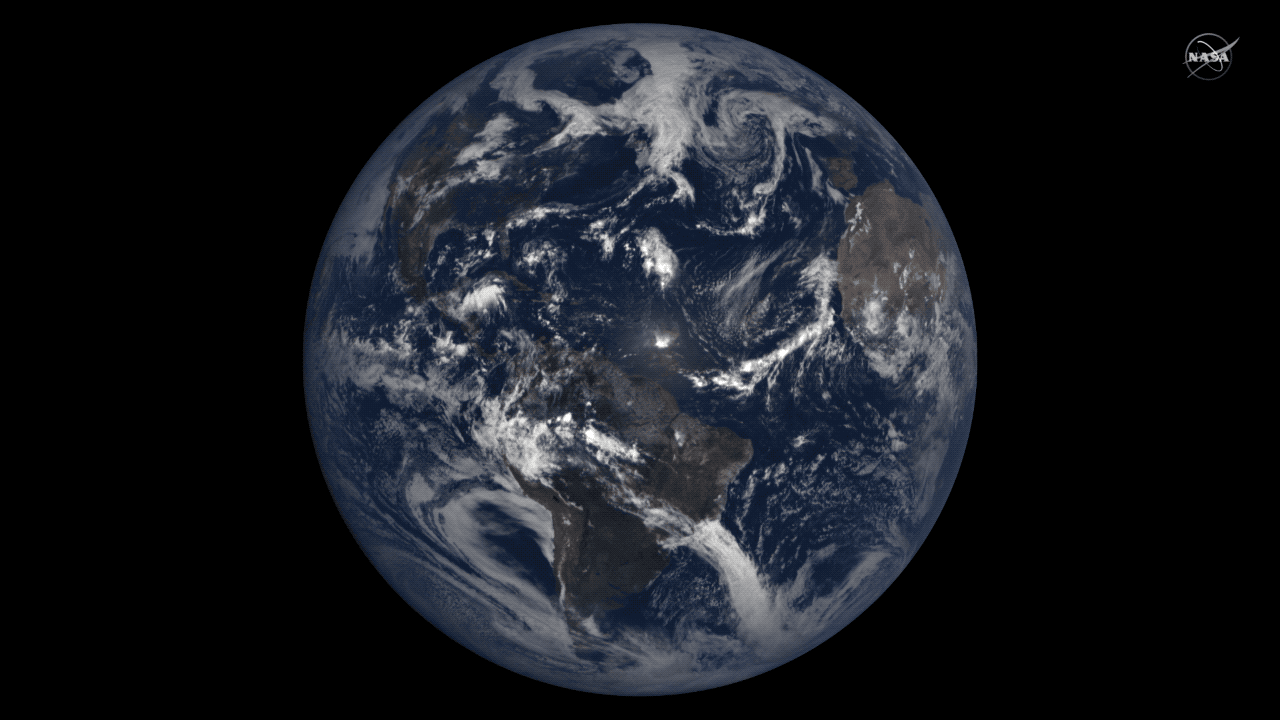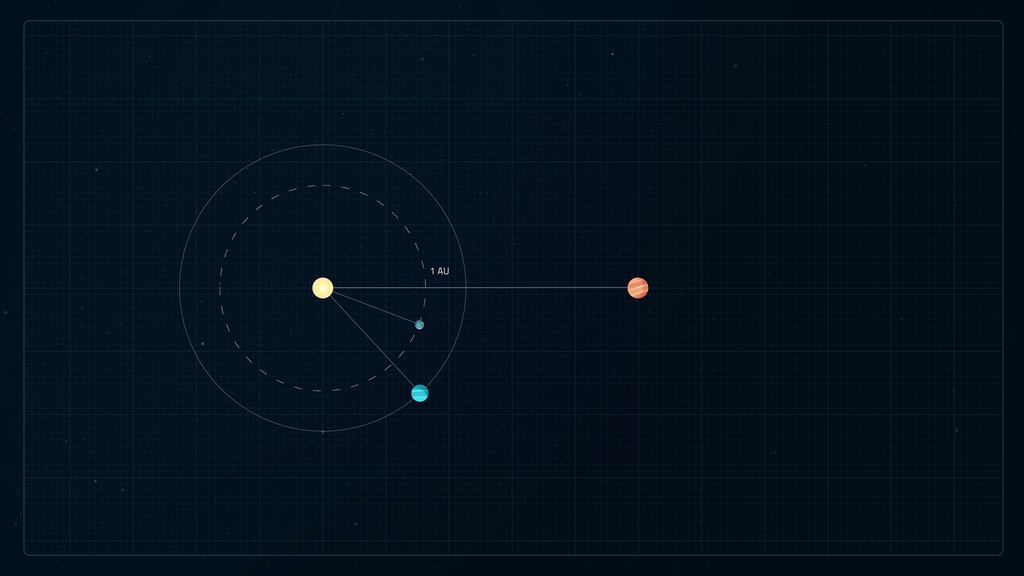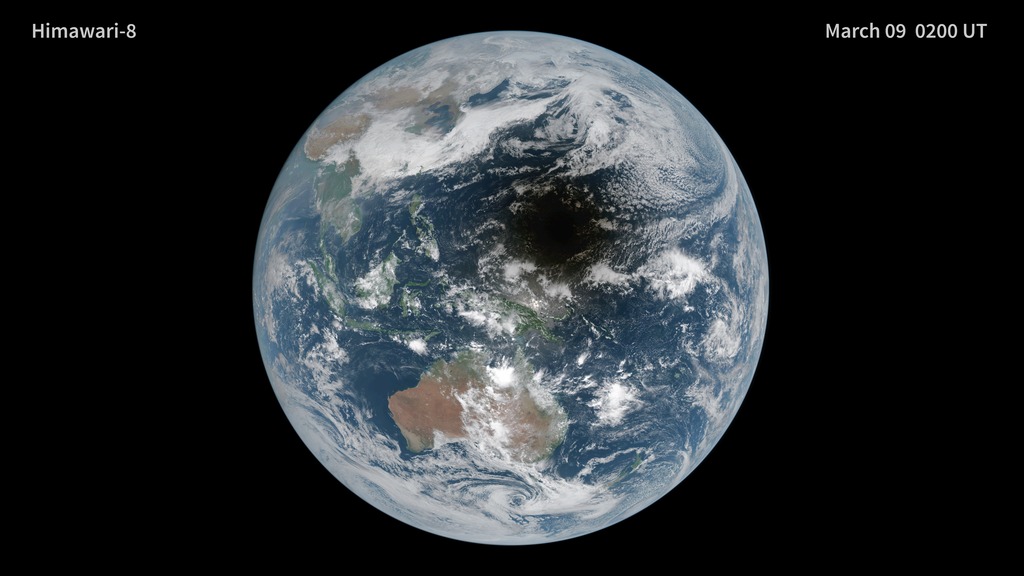An EPIC View of the Moon’s Shadow During the June 10 Solar Eclipse
NASA’s EPIC, Earth Polychromatic Imaging Camera (EPIC), sits aboard NOAA’s Deep Space Climate Observatory Satellite (DSCOVR). EPIC provides high quality, color images of Earth, which are useful for monitoring factors like the planet’s vegetation, cloud height, and ozone. And every once in a while –– most recently, June 10, 2021 –– it has the opportunity to capture a solar eclipse.
A solar eclipse occurs when the Moon is positioned between the Sun and Earth, leading the Moon’s shadow to be projected onto Earth. During a total solar eclipse, the Moon completely blocks the Sun. During an annular solar eclipse, like the one on June 10, the Moon is near its farthest point from Earth and appears smaller than the Sun in the sky. As the two align, the Sun appears as a ring of fire surrounding the dark disk of the Moon.
On June 10, viewers in parts of Canada, Greenland, and Russia were treated
to a full annular eclipse. People in a handful of other locations, including parts of the Caribbean, Asia, Europe, eastern United States, Alaska, and northern Africa, were able to catch a partial solar eclipse, where only part of the Sun is blocked by the Moon, leaving behind a crescent-shaped piece of Sun. EPIC didn’t have too bad a view, either.
You can find more photos and videos from EPIC, including a few lunar photobombs, here.
Music: “Cherry on Top” by Ben Beiny [PRS] from Universal Production Music
Complete transcript available.
Credits
Please give credit for this item to:
NASA's Goddard Space Flight Center
-
Intern
- Alison Gold (NASA)
-
Scientists
- Adam Szabo (NASA/GSFC)
- Dale Cruikshank (NASA Ames)
-
Animator
- Lisa Poje (USRA)
-
Data visualizers
-
Ernie Wright
(USRA)
-
Greg Shirah
(NASA/GSFC)
-
Ernie Wright
(USRA)
-
Support
- Joy Ng (KBR Wyle Services, LLC)
-
Technical support
- Aaron E. Lepsch (ADNET Systems, Inc.)
-
Producer
- Alison Gold (NASA/Intern)
Series
This page can be found in the following series:Release date
This page was originally published on Wednesday, July 21, 2021.
This page was last updated on Wednesday, May 3, 2023 at 1:44 PM EDT.

![Music: Seven by Andrea Sacco [SACEM]](/vis/a010000/a012700/a012742/LARGE_MP4-12742_Satellite_Wildfires_large.00564_print.jpg)

![Music: Crystal Sound Bath by James Alexander Dorman [PRS]Complete transcript available.](/vis/a010000/a012600/a012600/LARGE_MP4-12600_sunglints_large.00737_print.jpg)


